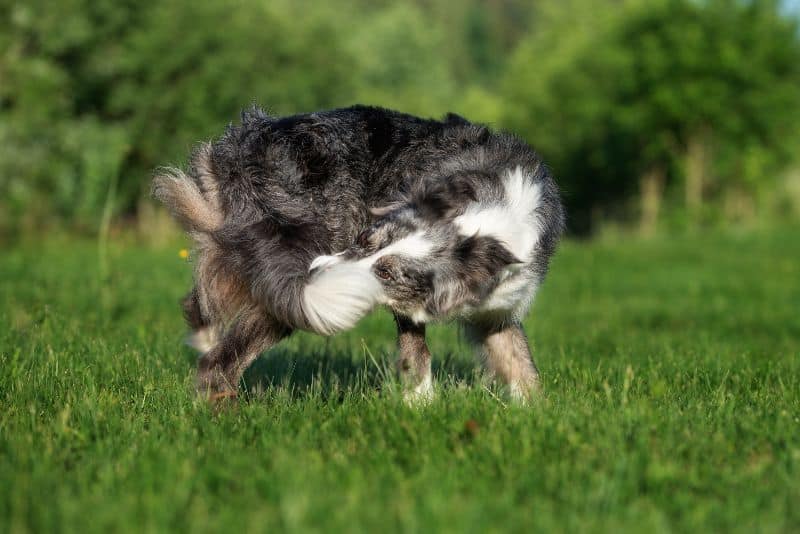Ask-A-Vet: Why do Dogs Chase Their Tails?

If you haven’t seen a dog chasing its tail in real life, you’ve likely seen an image or video of this uniquely canine behavior. Indeed, dogs provide us with countless hours of entertainment, and the tail-chasing is high on the list. But have you ever wondered why they do it?
As funny as they look while they’re doing it, the reasons why dogs chase their tails aren’t always amusing. Learning about the behavior, along with careful observation of your pup, can alert you to a potential problem…
Why Dogs Chase Their Tails
Playful pups – Tail chasing is common in puppies, who are just discovering the world around them and may not realize that their tails are attached and view them as another toy. Watch and enjoy, but refrain from praising your pup, as this could encourage them to use the behavior to get attention from you as they get older.
Boredom – Very often, dogs chase their tails when they aren’t getting enough exercise, mental stimulation, or spend long periods of the day confined to a kennel may chase their tails as a way to expend excess energy and pent-up frustration. Engage your dog in daily exercise in the form of walks, fetch, tug-of-war, or other games. Help keep your dog busy by asking a friend or dog walker to visit your dog during the day while you’re at work, and leave them with stimulating food puzzles or a treat-filled Kong (freeze it first for more of a challenge).
Tail-end problems – If your dog starts chasing, biting, or nipping at their tail suddenly, it may be time for a trip to the vet. There are a number of medical reasons for biting at or licking the tail or rear end, including injury, fleas, impacted anal glans, intestinal parasites, or even food allergies.
Genetics – Certain breeds, such as German shepherds, tend to chase their tails more often than other breeds, especially if they are bored or under-exercised.
Cute, or Concerning?
In rare cases, tail chasing may grow into a full-blown compulsion that needs to be treated by a veterinarian. Dogs can suffer from a type of obsessive-compulsive disorder (OCD) similar to humans, and tail-chasing is a common manifestation. Fortunately, this behavior can be overcome with behavior modification techniques, time, and lots of patience and empathy. Your veterinarian will be happy to help you get started.
Please don’t hesitate to contact your partners in pet care at Rocklin Ranch Veterinary Hospital with your questions, or to schedule an appointment for your pet.

